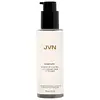What's inside
What's inside
 Key Ingredients
Key Ingredients

No key ingredients
 Benefits
Benefits

No benefits
 Concerns
Concerns

 Ingredients Side-by-side
Ingredients Side-by-side

Water
Skin ConditioningGlycerin
HumectantCetearyl Alcohol
EmollientHydrogenated Farnesene
EmollientCassia Hydroxypropyltrimonium Chloride
Saccharomyces Cerevisiae Extract
Skin ConditioningBrassicamidopropyl Dimethylamine
Skin ConditioningSqualane
EmollientCaprylic/Capric Triglyceride
MaskingCymbidium Grandiflorum Flower Extract
Skin ConditioningPanthenol
Skin ConditioningHydroxypropyltrimonium Lemon Protein
HumectantCetearyl Olivate
Tocopherol
AntioxidantSorbitan Olivate
EmulsifyingLeuconostoc/Radish Root Ferment Filtrate
AntimicrobialEthylhexylglycerin
Skin ConditioningAspartic Acid
MaskingSodium Gluconate
Skin ConditioningParfum
MaskingAmyl Cinnamal
PerfumingBenzyl Alcohol
PerfumingBenzyl Benzoate
AntimicrobialBenzyl Salicylate
PerfumingCitronellol
PerfumingCoumarin
PerfumingEugenol
PerfumingGeraniol
PerfumingHexyl Cinnamal
PerfumingHydroxycitronellal
PerfumingLimonene
PerfumingLinalool
PerfumingMethyl Ionones
MaskingWater, Glycerin, Cetearyl Alcohol, Hydrogenated Farnesene, Cassia Hydroxypropyltrimonium Chloride, Saccharomyces Cerevisiae Extract, Brassicamidopropyl Dimethylamine, Squalane, Caprylic/Capric Triglyceride, Cymbidium Grandiflorum Flower Extract, Panthenol, Hydroxypropyltrimonium Lemon Protein, Cetearyl Olivate, Tocopherol, Sorbitan Olivate, Leuconostoc/Radish Root Ferment Filtrate, Ethylhexylglycerin, Aspartic Acid, Sodium Gluconate, Parfum, Amyl Cinnamal, Benzyl Alcohol, Benzyl Benzoate, Benzyl Salicylate, Citronellol, Coumarin, Eugenol, Geraniol, Hexyl Cinnamal, Hydroxycitronellal, Limonene, Linalool, Methyl Ionones
Water
Skin ConditioningIsobutane
Vp/Methacrylamide/Vinyl Imidazole Copolymer
Propane
Polyquaternium-46
Steareth-21
CleansingPhenoxyethanol
PreservativePolysorbate 20
EmulsifyingEthyltrimonium Chloride Methacrylate/Hydrolyzed Wheat Protein Copolymer
Parfum
MaskingTapioca Starch
PEG/PPG-17/18 Dimethicone
EmulsifyingPEG-12 Dimethicone
Skin ConditioningPentaerythrityl Tetracaprylate/Tetracaprate
EmollientCaprylyl Glycol
EmollientPolymethylsilsesquioxane
Linalool
PerfumingWater, Isobutane, Vp/Methacrylamide/Vinyl Imidazole Copolymer, Propane, Polyquaternium-46, Steareth-21, Phenoxyethanol, Polysorbate 20, Ethyltrimonium Chloride Methacrylate/Hydrolyzed Wheat Protein Copolymer, Parfum, Tapioca Starch, PEG/PPG-17/18 Dimethicone, PEG-12 Dimethicone, Pentaerythrityl Tetracaprylate/Tetracaprate, Caprylyl Glycol, Polymethylsilsesquioxane, Linalool
Ingredients Explained
These ingredients are found in both products.
Ingredients higher up in an ingredient list are typically present in a larger amount.
Linalool is a fragrance and helps add scent to products. It's derived from common plants such as cinnamon, mint, citrus, and lavender.
Like Limonene, this ingredient oxidizes when exposed to air. Oxidized linalool can cause allergies and skin sensitivity.
This ingredient has a scent that is floral, spicy tropical, and citrus-like.
Learn more about LinaloolParfum is a catch-all term for an ingredient or more that is used to give a scent to products.
Also called "fragrance", this ingredient can be a blend of hundreds of chemicals or plant oils. This means every product with "fragrance" or "parfum" in the ingredients list is a different mixture.
For instance, Habanolide is a proprietary trade name for a specific aroma chemical. When used as a fragrance ingredient in cosmetics, most aroma chemicals fall under the broad labeling category of “FRAGRANCE” or “PARFUM” according to EU and US regulations.
The term 'parfum' or 'fragrance' is not regulated in many countries. In many cases, it is up to the brand to define this term.
For instance, many brands choose to label themselves as "fragrance-free" because they are not using synthetic fragrances. However, their products may still contain ingredients such as essential oils that are considered a fragrance by INCI standards.
One example is Calendula flower extract. Calendula is an essential oil that still imparts a scent or 'fragrance'.
Depending on the blend, the ingredients in the mixture can cause allergies and sensitivities on the skin. Some ingredients that are known EU allergens include linalool and citronellol.
Parfum can also be used to mask or cover an unpleasant scent.
The bottom line is: not all fragrances/parfum/ingredients are created equally. If you are worried about fragrances, we recommend taking a closer look at an ingredient. And of course, we always recommend speaking with a professional.
Learn more about ParfumWater. It's the most common cosmetic ingredient of all. You'll usually see it at the top of ingredient lists, meaning that it makes up the largest part of the product.
So why is it so popular? Water most often acts as a solvent - this means that it helps dissolve other ingredients into the formulation.
You'll also recognize water as that liquid we all need to stay alive. If you see this, drink a glass of water. Stay hydrated!
Learn more about Water